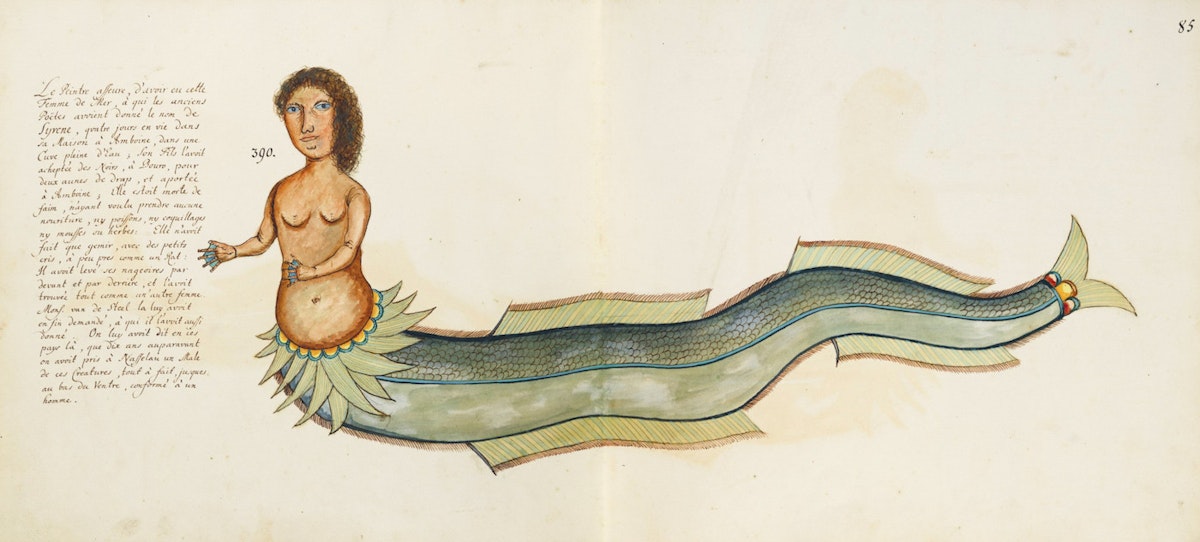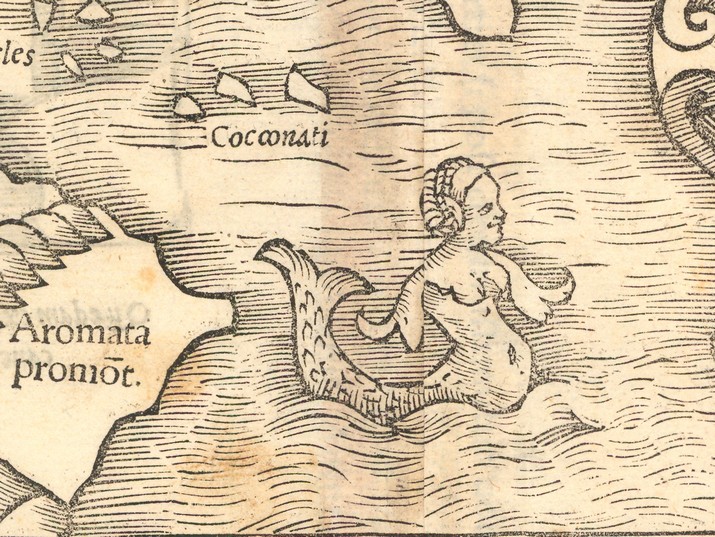Mermaids: Myths and Mysteries of the Deep
Beneath the shimmering waves, an ethereal song echoes through the depths, lilting and haunting. Is it the beckoning call of a mythical siren, luring unwary sailors to their demise upon the rocks? Or might it be the ethereal whispers of a mermaid princess, resplendent with flowing tresses and a tail of iridescent scales? For countless centuries, the legends of these elusive sea maidens have fired the human imagination with tales of both darkest peril and sublime beauty. From ancient Assyrian tablets to the fairy tales of Andersen, mermaid myths have surfaced across cultures, captivating our fantasies of the treasures lurking in the ocean's vast, unexplored realm. But are these fabled beings simply fanciful folly, born of seafarer's rumblings and one too many briny benders? Or might the mysteries of the deep conceal a kernel of truth behind the speculation - an enigmatic reality too wondrous to fathom? The Quest for the mermaid has spanned eons, but her secrets remain as inscrutable as the obsidian depths in which she is said to dwell.
From ancient Assyrian tablets to the fairy tales of Andersen, mermaid myths have surfaced across cultures, captivating our fantasies of the treasures lurking in the ocean's vast, unexplored realm. But are these fabled beings simply fanciful folly, born of seafarer's rumblings and one too many briny benders? Or might the mysteries of the deep conceal a kernel of truth behind the speculation - an enigmatic reality too wondrous to fathom? The Quest for the mermaid has spanned eons, but her secrets remain as inscrutable as the obsidian depths in which she is said to dwell.
Mermaids have captivated the human imagination for centuries, surfacing in folklore, literature, art, and pop culture across myriad cultures and civilizations. These enigmatic sea maidens, with their bewitching siren songs and flowing locks, have inspired equal parts wonder and intrigue regarding their possible existence in the unfathomable depths.
The Mythological Origins
 Tales of merfolk can be traced back to ancient Assyrian lore dating to around 1000 BC, which spoke of terrifying fish-like beings that lived in the waters and had the ability to emerge onto land. Ancient Greek myths depicted alluring maidens known as sirens, with the upper bodies of women and the tails of fish, whose enchanting melodies lured sailors to their doom upon the rocky coasts.
Tales of merfolk can be traced back to ancient Assyrian lore dating to around 1000 BC, which spoke of terrifying fish-like beings that lived in the waters and had the ability to emerge onto land. Ancient Greek myths depicted alluring maidens known as sirens, with the upper bodies of women and the tails of fish, whose enchanting melodies lured sailors to their doom upon the rocky coasts.
These early legends planted the seeds for the proliferation of mermaid myths across Europe in later centuries. The Arabian Nights contains one of the oldest written mermaid tales, while Danish author Hans Christian Andersen's 1837 fairy tale The Little Mermaid is perhaps the most well-known mermaid story in the Western world. Similar sea maiden folklore abounds in Africa, Asia, the Middle East, and indigenous cultures globally.
Sightings and Supposed Evidence
 Despite their fantastical nature, alleged mermaid sightings have persisted over the years from sailors, naval officers, pirates, and coastal dwellers. One of the earliest documented sightings occurred in 1608, when Captain Henry Hudson reported seeing a mermaid off the coast of Greenland. In 1801, a celebrated case involved a group of sailors aboard the HMS Endeavor claiming to have seen a mermaid in the Pacific. The captain even fired a cannon to try and obtain the specimen.
Despite their fantastical nature, alleged mermaid sightings have persisted over the years from sailors, naval officers, pirates, and coastal dwellers. One of the earliest documented sightings occurred in 1608, when Captain Henry Hudson reported seeing a mermaid off the coast of Greenland. In 1801, a celebrated case involved a group of sailors aboard the HMS Endeavor claiming to have seen a mermaid in the Pacific. The captain even fired a cannon to try and obtain the specimen.
In 2009, running footage of what appeared to be a mermaid from Israeli waters went viral, though it was later revealed to be a detailed hoax using computer animation. The infamous "Fiji mermaid" was an elaborately constructed "mermaid mummy" made of a creature's torso attached to a fish tail that was a major attraction when put on display in the 1800s. While these have all been debunked as either hoaxes or misidentifications, they underscore the persistence of beliefs in their existence.
Biological Perspective
 From a biological standpoint, the existence of a warm-blooded, air-breathing mammal merges with the body of a cold-blooded fish is implausible at best. There are no known species representing such a hybrid. Marine biologists assert that the immense difficulties of such biological divergence make mermaids near-impossible from an evolutionary perspective.
From a biological standpoint, the existence of a warm-blooded, air-breathing mammal merges with the body of a cold-blooded fish is implausible at best. There are no known species representing such a hybrid. Marine biologists assert that the immense difficulties of such biological divergence make mermaids near-impossible from an evolutionary perspective.
Some have speculated that mermaid legends arose from sightings of marine mammals like manatees or dugongs whose tail movements could resemble a mermaid's undulations from a distance. The bony plates on their heads have even been mistaken for crowns. Others theorize sightings of sailors suffering from hallucinations, delirious conditions, or marine mirage effects may explain historical claims.
Despite the formidable scientific challenges to their existence, mermaids have shown no signs of disappearing from pop culture and the human psyche anytime soon. Disney's The Little Mermaid transformed Ariel into a modern icon, while remakes and TV shows like Pirates of the Caribbean, Once Upon a Time, and Siren have explored mermaid narratives. Musical groups have emulated mermaids in their imagery and personas, ranging from Cher to Christina Aguilera. Mermaid inspiration persists in fashion, cosmetics, festivals, and attractions globally.Mermaids seem to represent an enthralling paradox - creatures both beauty and danger, freedom and captivity, familiarity and otherworldliness. They captivate as symbols of the mysteries and wonders that lurk in the unexplored majesty of the ocean realm. While irrefutable proof of their reality remains elusive, the eternal mystique and allure of mermaids will undoubtedly continue sparking our imaginations.
Siren Songs
In ancient Greek mythology, the sirens were dangerous yet alluring creatures, depicted as beautiful women whose enchanting singing voices had the power to lure sailors towards rocky coastlines, causing them to crash upon the jagged cliffs to their demise. Their lyrical "siren songs" were so seductive and captivating that no mortal man could resist their hypnotic spell once within earshot. The sirens make their first appearance in Homer's epic The Odyssey. Odysseus, the crafty hero, was warned by the sorcerer Circe of the deadly peril posed by the sirens as he sailed homeward after the Trojan War. Filled with an all-consuming desire to live after hearing their bewitching melodies, sailors would be compelled to abandon the ships, embracing their watery graves amongst the rocks.
The sirens make their first appearance in Homer's epic The Odyssey. Odysseus, the crafty hero, was warned by the sorcerer Circe of the deadly peril posed by the sirens as he sailed homeward after the Trojan War. Filled with an all-consuming desire to live after hearing their bewitching melodies, sailors would be compelled to abandon the ships, embracing their watery graves amongst the rocks.
To protect himself and his crew from falling under the sirens' fatal trance, Odysseus famously filled his sailors' ears with beeswax. However, consumed by an overpowering curiosity to experience their seductive strains, he had himself bound tightly to the ship's mast. True to Circe's cautions, the sirens' hypnotic harmonies enchanted Odysseus completely, driving him to thrash wildly against the restraints in his fervor to succumb to their beckoning calls before they passed safely out of audible range.
The sirens were considered disarmingly beautiful alongside their musical talents, often depicted as voluptuous woman-creatures with the heads and torsos of humans blending into the lower bodies of birds or mermaids. Their songs were said to conjure visions of an idyllic, blissful paradise to lure mariners towards their demise. Some scholars interpreted the sirens as symbolic metaphors for the contingencies that tempt humans into reckless, self-destructive impulses when pursuing sensual pleasures.
Beyond Greece, siren lore appears throughout many ancient cultures, including Arabian, Roman, Maltese, and even Indigenous American mythologies. Their symbolism of dangerous seduction wielded through song has made sirens a ubiquitous motif in art, literature, music, and media throughout the ages. Many operas, artworks, poems, and novels have explored sirens and their irresistible, inescapable songs as tropes. John William Waterhouse's sensual painting "Hylas and the Nymphs" depicts their fatal charms. The Little Mermaid incorporates metaphorical siren songs through Ariel's underground grotto of human artifacts collected from shipwrecks. Contemporary examples abound from Amanda Seyfried's celebrity persona to the band Siren Songs. Taylor Swift's "Begin Again" music video cast her as a modern siren luring a beau with her singing.
Many operas, artworks, poems, and novels have explored sirens and their irresistible, inescapable songs as tropes. John William Waterhouse's sensual painting "Hylas and the Nymphs" depicts their fatal charms. The Little Mermaid incorporates metaphorical siren songs through Ariel's underground grotto of human artifacts collected from shipwrecks. Contemporary examples abound from Amanda Seyfried's celebrity persona to the band Siren Songs. Taylor Swift's "Begin Again" music video cast her as a modern siren luring a beau with her singing.
Whether they are ancient Greek mythological figures or modern metaphors, sirens and their hypnotic songs symbolize the self-destructive temptations all mortals must resist to survive - the primal, visceral pleasures that could imperil us if we surrender to their intoxicating lures. They embody our quintessential human frailties when confronted with seduction, yet their potent majesty has rendered them eternal, captivating icons
Conclusion
Though science has rendered mermaids biologically implausible, and clever hoaxes have repeatedly dashed hopes of their corporeal existence, these elusive maidens of the sea retain an unbreakable hold upon the human imagination. Their lithe, sinuous forms and ethereal siren songs seem to symbolize both the terrifying, untamable power and breathtaking magnificence of the oceanic kingdoms in which they are said to reign. For as long as the estuaries and abyssal trenches conceal their innumerable secrets, mere glimpses of sleek, undulating shapes in the waves will catalyze our yearning to believe. The tantalizing notion that stunningly beautiful, part-human beings may lurk in the unfathomable depths will ensure mermaids remain anchored in folklore for generations to come. Their mystery endures, beguiling us to the very brink of the shore with whispers of the wonders and treasures that may one day be revealed. Keep watching the endless undulations intently enough, and you may catch a glimpse of a fiery, arching tail before it vanishes beneath the foam.
For as long as the estuaries and abyssal trenches conceal their innumerable secrets, mere glimpses of sleek, undulating shapes in the waves will catalyze our yearning to believe. The tantalizing notion that stunningly beautiful, part-human beings may lurk in the unfathomable depths will ensure mermaids remain anchored in folklore for generations to come. Their mystery endures, beguiling us to the very brink of the shore with whispers of the wonders and treasures that may one day be revealed. Keep watching the endless undulations intently enough, and you may catch a glimpse of a fiery, arching tail before it vanishes beneath the foam.







































